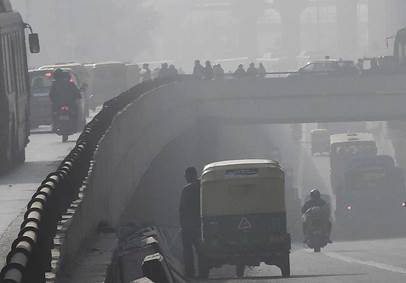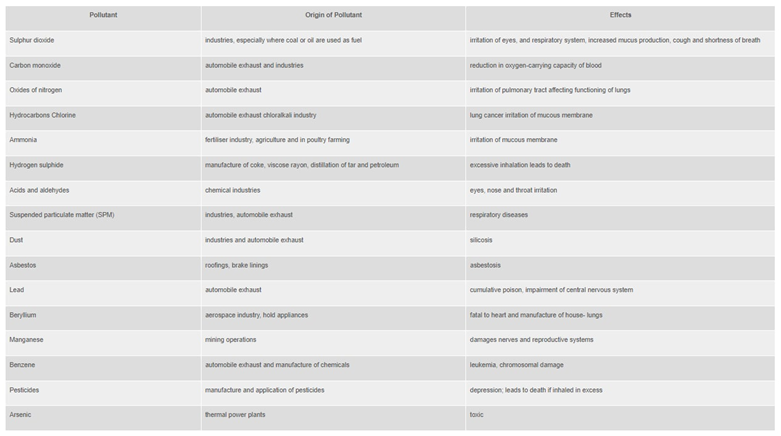AIR QUALITY AND HEALTH IN CITIES REPORT

Copyright infringement is not intended
Context:
- A global analysis of air quality found that Indian cities, while recording particulate matter emissions (PM2.5) that are among the highest in the world, do relatively better on nitrogen dioxide (NO2) emissions.
- The report, Air Quality and Health in Cities, released by U.S.-based Health Effects Institute, analyses pollution and global health effects for more than 7,000 cities around the world, focusing on two of the most harmful pollutants - fine particulate matter (PM2.5) and nitrogen dioxide (NO2).
Details:
- The report, using data from 2010 to 2019, found that global patterns for exposures to the two key air pollutants were “strikingly different.”
- While exposures to PM2.5 pollution tend to be higher in cities located in low- and middle-income countries, exposure to NO2 is high across cities in high-income as well as low- and middle-income countries.
- Delhi and Kolkata were ranked first and second in the list of top 10 most polluted cities when PM2.5 levels were compared, with Delhi and Kolkata reporting an average annual exposure of (relative to population) of 110 ug/m3 and 84 ug/m3 respectively. ug/m3 refers to microgram per cubic metre.
- However no Indian city appeared in the list of top 10 – or even top 20 - polluted cities when N02 levels were compared. This list saw Shanghai at the top with an average annual exposure of 41 ug/m3.
- Average NO2 levels for Delhi, Kolkata and Mumbai, according to the report, ranged from 20-30 ug/m3.
- NO2 comes mainly from the burning of fuels in older vehicles, power plants, industrial facilities and residential cooking and heating.
- As city residents tend to live closer to busy roads with dense traffic, they are often exposed to higher NO2 pollution than residents of rural areas.
- In 2019, 86% of the more than 7,000 cities analysed in the report exceeded the WHO’s 10 ug/m3 guideline for NO2, impacting about 2.6 billion people.
- This paradoxical situation in India was likely due to the relatively lower adoption of high-efficiency engine vehicles. Complete combustion of fuel results in higher NOx (nitrogen oxides) where incomplete combustion sees other kinds of emissions.
- Due to their highly reactive nature, nitrogen oxides also contributed to the formation of other pollutants, including ozone and particulate matter. NO2 also has a shorter lifetime compared with PM2.5 and other air pollutants.
- As a result, NO2 levels show very high variability in space and time — levels can vary significantly even across a few kilometres. In comparison, PM2.5 levels tend to show less spatial variation.
- In 2019, the global average NO2 exposure was 15.5 ug/m3, but exposure levels varied considerably across cities.
- Ground monitoring of air quality remains limited in many regions of the world, the report adds, obscuring the true degree of NO2 pollution in countries such as India.
Air Pollution
- Air pollution is the presence of any unwanted solid, liquid, or gaseous substance in the atmosphere and in such concentration that tends to be injurious to human beings or other living Creatures, Plants, Property, environment, etc.
- Types of Air pollution:
- Indoor Air Pollution
- Outdoor Air Pollution
- Causes of Air Pollution:
- Vehicle Smoke
- Fossil fuel-based Power Plants
- Exhaust from Industrial Plants and Factories
- Construction and Agricultural activities
- Natural Causes
- Household activities
- Effects of Air Pollution:
- Respiratory and Heart Problems
- Global warming
- Acid rain
- Eutrophication
- Effect on Wildlife
- Depletion of the Ozone layer

Copyright infringement is not intended
What is Particulate Matter 2.5 (PM2.5)?
- The term fine particles, or particulate matter 2.5 (PM5), refers to tiny particles or droplets in the air that are two and half microns or less in width.
PM2.5 effect on health
- Particles in the PM5size range are able to travel deeply into the respiratory tract, reaching the lungs.
- Exposure to fine particles can cause short-term health effectssuch as eye, nose, throat and lung irritation, coughing, sneezing, runny nose and shortness of breath.
- Long term exposureto fine particulate matter may be associated with increased rates of chronic bronchitis, reduced lung function and increased mortality from lung cancer and heart disease.
Where does PM2.5 come from?
There are outdoor and indoor sources of fine particles.
- Outside, fine particles primarily come from car, truck, bus and off-road vehicle (e.g., construction equipment, snowmobile, locomotive) exhausts, other operations that involve the burning of fuels such as wood, heating oil or coal and natural sources such as forest and grass fires. Fine particles also form from the reaction of gases or droplets in the atmosphere from sources such as power plants.
- PM5is also produced by common indoor activities like tobacco smoke, cooking (e.g., frying, sautéing, and broiling), burning candles or oil lamps, and operating fireplaces and fuel-burning space heaters (e.g., kerosene heaters).
International impact of PM 2.5
- The WHO estimates that air pollution “kills an estimated seven million people worldwide every year” and their data “shows that 9 out of 10 people breathe air containing high levels of pollutants.
- NASA satellite data pertaining to PM 2.5 and found that “more than 4 in 10 Indians are exposed to 5 times the safe limit of particulate matter in the air they breathe
Steps taken
- Niti Aayog has proposed a 15-point action plan titled 'Breath India' for combating air pollution in the ten most polluted cities in the country.
- Supreme Court banned the sale of Vehicles that are not compliant with Bharat Stage IV fuel.
- National Clean Air Programmefor India released by Ministry of Environment;
- Develop an effective air quality monitoring network across the Country for ensuring a comprehensive and reliable database.
- Involve public participation in both planning and implementation of the programmes and policies of government on air pollution
- Green Skill Development Programmefor Skilling about 7 Million youth in Environment, Forestry, Wildlife and Climate Change Sectors.
- The government is providing Subsidies on Crop residue management machinery.
- Pradhan Mantri Gram Sadak Yojana(PMGSY) encourages the use of ‘Green Technologies’ and non-conventional materials like waste plastic, cold mix, geo-textiles, fly ash, iron and copper slag etc on rural roads.
National Clean Air Program (NCAP)
- It was launched in 2019.
- Aim:to reduce pollution by 20-30 % by 2024, particularly in 132 non-attainment cities.
- Fund allocation: Under the NCAP, Rs 375.44 crore was provided to 114 cities from 2018-19 to 2020-2021 and Rs 290 crore allocated to 82 cities for 2021-2022. The programme has an allocation of Rs 700 crore envisaged for 2021-2026.
- Target to bring down pollution by 2024:
- Country’s current annual safe limits for PM 2.5 and PM 10 are 40 micrograms/per cubic metre (ug/m3) and 60 micrograms/per cubic metre.
- The NCAP has set a target of reducing key air pollutants PM10 and PM2.5 (ultra-fine particulate matter) by 20-30% by 2024, taking the pollution levels in 2017 as the base year.
- Membership: Apart from experts from the industry and academia, the programme is expected to be a collaboration between the Ministry of Road Transport and Highways, Ministry of Petroleum and Natural Gas, Ministry of New and Renewable Energy, Ministry of Heavy Industry, Ministry of Housing and Urban Affairs, Ministry of Agriculture, Ministry of Health, NITI Aayog, and Central Pollution Control Board.
https://epaper.thehindu.com/Home/ShareArticle?OrgId=GA4A5OONT.1&imageview=0




1.png)
